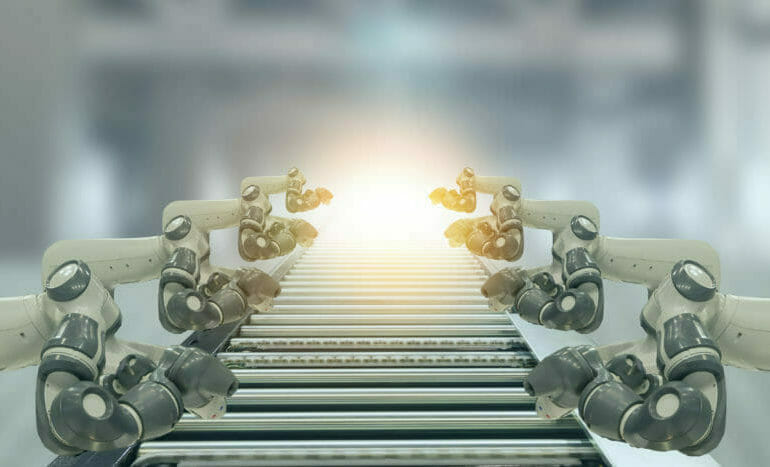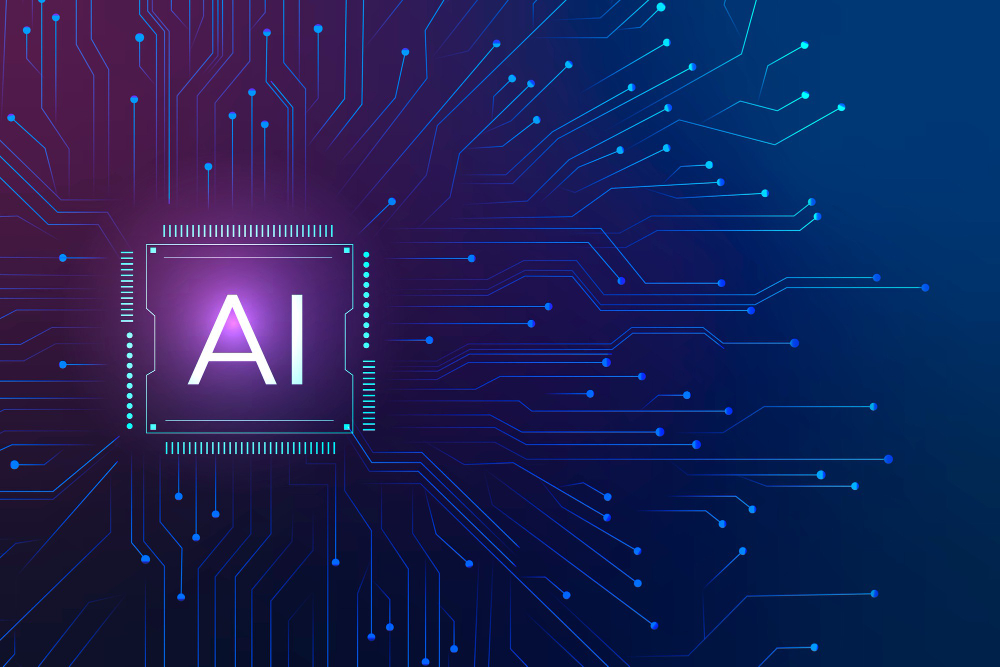In today’s ultra competitive environment, every business must implement advanced technologies to stay ahead of disruption. If your business is not part of that journey, if you don’t innovate, it’s likely the business will go bust.
The use of AI in robotics and hardware is something that every CTO, especially in industries like manufacturing, must be exploring. Integrating software with hardware is necessary to stay ahead of the curve.
A guide to artificial intelligence in enterprise: Is it right for your business?
Integrating AI with robotics and hardware
Integrating AI (software) into robotics, or hardware, is important, because of how the architecture of computers works.
Dr Antonio Espingardeiro, senior member of IEEE Robotics and Automation Society and independent automation software developer, explains that “since the beginning of the computing era you had hardware circuits (the machine) and ran software on top. In an anthropomorphic way, the hardware is the ‘body’ and software the ‘mind’.”
It’s the same, he says, when you talk about IoT or robotic systems, you have the computing part that has software running and the hardware part which is, most of the time, a combination of mechanical and electrical systems. The software gives instructions to the hardware to sense and accomplish things.
Why is this articulation important? “More than a necessity, from a technical point of view I believe we must think in a synergetic way. AI and hardware must work together to achieve goals,” answers Espingardeiro.
In an anthropomorphic way, the hardware is the ‘body’ and software the ‘mind’
Integration best practice
Over the years, whether you’re in healthcare, manufacturing, finance or marketing, several systems will have been developed in different programme languages — these systems must interact with each other.
“In terms of software,” continues Espingardeiro, “most of the time this is accomplished by developing web service APIs where interfaces are agreed for the systems to communicate with each other. With regard to hardware, it is absolutely crucial for the hardware to have a software layer to control all the electronics. For example, mobile phones, electrical cars, fridges and other types of equipment all have some form of software embedded in.”
“From a business point of view, a large part of technological projects in IT are integrations” — Espingardeiro
Initially, applications for robotics were deployed where 100% repeatable motions could be used. This, according to Simon Watt — co-founder and chief technology officer at Karakuri — was fine for the assembly of hard parts; cars, computers etcetera. However, as soon as you move into processing things which aren’t 100% consistent, such as food, you can’t do that.
“Machines need to learn to adapt to all the changes in the product you’re handling — from day to day, hour to hour and even piece to piece,” suggests Watt.
He says: “AI isn’t necessarily the grand vision. It’s using machine learning techniques to continuously tune parameters, neural networks to analyse images and reinforcement learning to let train robots train themselves.”
Integrating artificial intelligence: Best practice tips — a CTO guide
A CTO, business and societal concern: jobs
The benefits of integrating AI into robotics are aplenty. But, there is a glaring issue. What are the implications for potential job losses that are set to be replaced by automation?
“Although it’s often repeatable and low-level tasks that we see being automated today, more and more businesses are using AI in robotics to aid the most complex, human-centric jobs,” warns Kalyan Kumar, corporate vice president and CTO, HCL Technologies.
He continues: “As robots leave the realm of the factory and branch out to trades like healthcare, agriculture and customer service, we are increasingly seeing industry-specific use cases being addressed inclusively. The enterprise benefits of this are endless, but it always raises the question: if robots can complete the most complicated tasks in the most demanding industries and businesses, will there be a need for humans?
“In truth, the fears around humans losing their jobs to robots are, for the most part, unfounded. When one thinks about this, for every complex task resolved, there will always be another more difficult one set to appear, so the advancements made in robotics will leave humans free to focus on more pressing and important jobs. This, in turn, will naturally upskill the workforce and ensure it is better equipped to deal with future problems that arise.”
While this is true to an extent, it is difficult to imagine a taxi or lorry driver being able to run the software of an autonomous fleet ahead of a wide-eyed tech graduate or tech professional. Where will the automation age leave those whose careers have been forged in manual intensive roles? Organisations will have to invest more time and effort into helping employees develop new skills — they can’t be left behind. “It is an economic shift that has be planned and take action progressively,” Espingardeiro agrees. “Yes, the ethical standards are crucial but most importantly it’s how we shape the foundations and how we put it into practice that will make the real difference.”
Kumar frames it slightly differently. He believes that the real business issue isn’t about humans losing jobs, but instead, how their jobs will function alongside robots — after all, robots will only ever be as good as the people training them. “There needs to be an internal, cross-organisational precedent to follow, where businesses evaluate their current processes and find the best way to incorporate AI and robotics alongside human workers. Businesses should be asking themselves: are we realistic about AI and robotics and what it is capable of? Do we have a roadmap in place to ensure our workforce is trained to function alongside this? This is just as important as the robotic hardware components themselves,” he says.
Will AI destroy jobs – or just create new ones?
Digital Privacy concerns
As AI pervades more industries in greater depth, ethical AI questions will naturally arise. This is another concern that must be addressed by CTOs and their colleagues.
In order for AI to work effectively, more and more data is needed. And to satisfy the software, Espingardeiro predicts the prevailing omnipresence of information systems monitoring in humans’ daily routines. “With the rise of the Internet of Things (IoT) sensors will be displaced everywhere, even in our clothes and bodies. Such technology has its advantages — sales, monitoring health, time and resources management — bringing efficiency, but at the same time raises ethical questions with regards to information accessibility and ownership.”
Combating this will involve reshaping the concept of ‘digital privacy’, which is a “topic intrinsically related to the level of exposure that we aspire to and that we are likely to comply with,” he says.
UK artificial intelligence investment reaches record levels
Investing in AI
AI can generate a lot of value in an organisation. To maximise this value, organisations must identify all the areas where AI-generated data can be applied — both internally and throughout their supply chain ecosystem. Anupam Aishwarya, AVP solutions consulting at E2open, explains that “their data’s value is only limited by their ability to leverage it”.
He says that to maximise investment in AI, robotics and connected hardware, “organisations must investigate how data from these devices can inform and streamline operations. Amazon’s recent plans to open two new robotic fulfilment centres represents an opportunity to leverage warehouse data to improve supply chain management.
“Sophisticated AI devices capable of machine to machine (M2M) communications can remedy a lack of transparency in the supply chain, where according to Capgemini, 83% of supply chain executives believe a lack of end-to-end visibility in their organisation was a barrier to growth.”
This isn’t Star Trek, there are already a huge range of production-ready, proven at scale AI applications in the market — “investing in areas such as robotic process automation (RPA), unstructured learning and demand forecasting/sensing need not represent a gamble,” advises Aishwarya.
“The key is to develop production AI solutions that can access data from many disparate sources in real-time, enrich it to become decision-grade and use broader and deeper operational insights to drive better business outcomes on an unprecedented scale.
“Companies needn’t jump in with major investments: they can take small steps to ensure they’re moving in the right direction. What they can’t afford to do is stand still.”
Related articles
Are there solutions to the AI threats facing businesses?
What is AI? A simple guide to machine learning, neural networks, deep learning and random forests!
If you want to see the benefits of AI, forget moonshots and think boring
AI predictions: how AI is transforming five key industries
Darktrace unveils the Cyber AI Analyst: a faster response to threats
Is the cloud and AI becoming two sides of the same coin?







